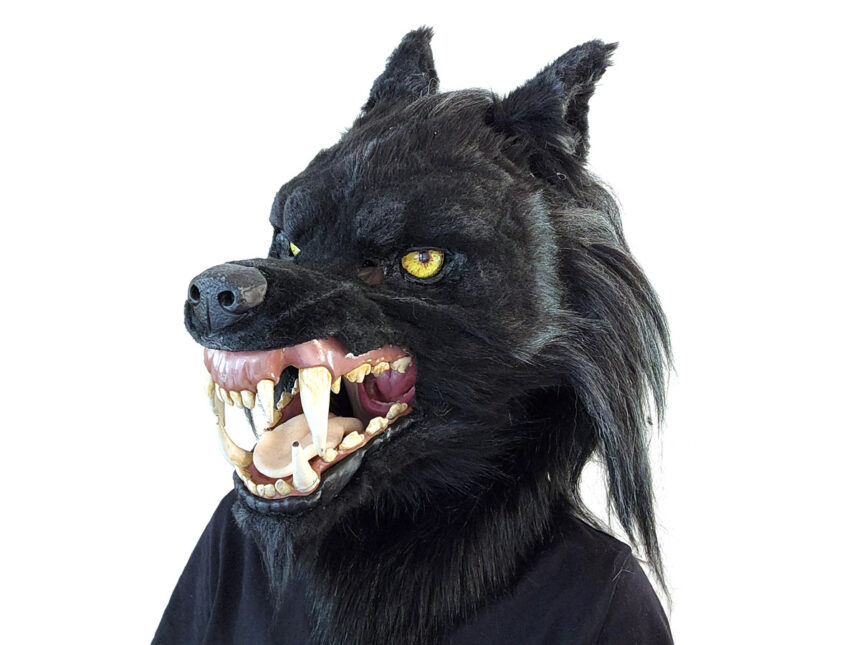Masks are great and come in many different shapes and forms, but adding special features takes it to the next level. Here we’ll show you how to create an advanced mask with moving parts, such as a werewolf head, without the need for motors.
When I create any mask, I start with a 3D scan of my head and lots of reference photos of the animal to work out the line of sight and how the animal will look out of the mask (whether that’s through clear eyes, a hidden mesh peephole, or in this case, looking out through the mouth).



Next, adding movement to the mask is a process of reverse engineering for me.
- Sketch out which parts move in which direction and where the parts start and end.
- Then figure out how to move this part into the desired position using a rotation point or push/pull system.
- These rotation points or push/pull systems connect to my favorite way of controlling movement, which is jaw movement.

For the growling lips on my wolf mask, I decided to use a moving nose piece connected to a moving jaw, as this worked well with the wolf’s facial expression. The wolf mask eventually evolved to have moving ears as well, using a push-pull system where thin steel wire cables pull the ears and elastic bands push them back into place (pictured above). The cables were inspired by bicycle brake cables and are very versatile, being able to be positioned and lined up at different angles and with different methods of control. This allowed the ears to rotate in different directions in conjunction with the jaw movement.




By moving the pivot points closer or further away, you can tweak how much the final part will move. I had to 3D print and tweak the werewolf design several times, changing the angles and mounting positions of different parts to get it to work. So for the first mask, I drilled a bunch of holes here and there to find the best angles. I even riveted popsicle sticks and paint stirrers to get an idea of where the movement would go.
All these features need to be integrated into the final look of the mask, so the idea of how to cover the mechanism is important for the end result, although I think just the raw frames look pretty amazing too.
I added motorized blinking eyelids to the final mask, which I sell as a DIY kit. I ended up using CreatureCast (a neoprene-based rubber alternative to liquid latex) to create a cover for the eyelid mechanism, and some faux fur to create the rest of the skin without restricting movement. When attaching the final cover, remember to test all mechanisms with the mask both closed and open.
If you want to know more about how the mask works, check out the video below. My YouTube ChannelAnother interesting articulated mask is my Savathûn mask, which uses a similar wire pull system to create a very different look.

This article make: Vol.86.








